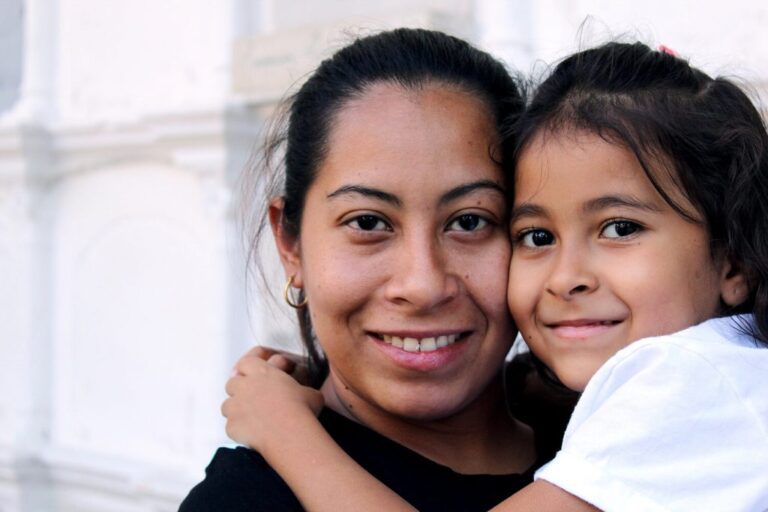Tackling Intergenerational Poverty in Utah
State leaders in Utah are determined to find solutions to intergenerational poverty and strengthen the lives of children and their parents. As Governor Gary R. Herbert shared with colleagues at the National Governors Association, “Intergenerational poverty is generation after generation where the grandparents, parents, and now the children, are trapped in poverty. We’re trying to break that cycle[1].” With this focus, the Governor tasked his administration to find solutions and prioritize the work of Utah’s multi-agency Intergenerational Welfare Reform Commission and data initiative in 2012. Ascend at the Aspen Institute became one of the partners in these efforts through connections with other innovative states, local community efforts, technical assistance, and leadership support.
Utah understands the moral and economic importance of this issue, which requires a multi-faceted approach involving the child welfare, criminal and juvenile justice systems, education, workforce development, and health sectors. Ascend partners with the state in this important effort by contributing its expertise and understanding of promising practices, supporting visionary leaders with bold ideas, and connecting levels of government. Utah leaders have participated in the Ascend Aspen Fellowship and the Ascend Network, allowing the state to embed 2Gen approaches in its plan to reduce intergenerational poverty. This relationship strengthens Utah’s focus and momentum, as well as provide leadership tools to catapult efforts and solutions.
Utah uses these valuable resources and tools to gather evidence from multiple disciplines of expertise to guide, influence, and reinforce its data-informed framework. The state leverages comprehensive data and research to strategically engage the Utah legislature and foster system change that will disrupt poverty cycles. Together, community partners, policymakers at every level, large systems, and family peer advocates actively utilize individual and family strengths to achieve success.
Data-Driven, Community-based Solutions
To track progress of efforts, Utah releases a report on intergenerational poverty[2] each year, published through the Department of Workforce Services, with input and outcomes provided by multiple state agencies: Departments of Health, Human Services, State Board of Education, and Juvenile Courts. The report tracks parent and child outcomes attributed to multigenerational programs such as Women Infant and Children, home visitation, and child homelessness. Utah leaders working on intergenerational poverty developed professional peer relationships with other national leaders across disciplines to learn best practices in utilizing data to measure outcomes and develop strategies that influence, reinforce, and inspire Utah’s framework.
Utah is not only tackling this issue through involvement of state government but also recognizes that outcomes will only be achieved through involving local communities. The Intergenerational Welfare Reform Commission partnered with 13 counties, mostly rural, with the highest rates of children experiencing poverty to develop local solutions. Counties are utilizing state data and family and partner voice to develop plans that seek outcomes across four areas of child well-being: early childhood development, education, family economic stability, and health (both physical and behavioral). The implementation of these plans will progress this year as counties become eligible to apply for implementation grants and funding through the Utah Legislature.
Programs and Practice
Utah’s approach does not merely focus on economic data to reduce intergenerational poverty. It incorporates the valuable research provided by members of the Ascend Network demonstrating the harmful intergenerational effects in the areas of brain science, parental resilience, and trauma-informed care. Professionals continue to validate the approaches Utah’s lawmakers, Commission, and councils are taking with data, community involvement, and home-based services to strengthen generations.
Actions born directly out of the Utah intergenerational poverty legislation and policies include a 2Gen program called “Next Generation Kids,” which seeks to increase family economic stability by partnering with the private sector to provide community college and technical training for parents. Though it is still in development, the program will help formerly incarcerated fathers become certified in diesel technology, medical manufacturing, executive functioning, life skills, and parenting[3]. In its initial evaluation of the program, results are positive with increased parental engagement and work activities. Another effort titled “Invest in You Too” supports mothers develop skills in medical manufacturing, and after demonstrating success, Utah created “Invest in Dads Too[4].”
A lens on intergenerational poverty and focus on strengthening the family before cycles repeat is influencing other policy reform and practice. This is particularly evident in the state’s trauma- informed efforts to safely reduce the removal of children from their homes through increased in-home services that strengthen families. Through a federal Title IV-E child welfare demonstration waiver, Utah’s Child and Family Services started HomeWorks in 2013, which became statewide by 2015. With the use of evidence-based assessment and ongoing engagement with families, Utah has been focused on enhancing parental capacity with home- and community-based supportive services.
In 2017 and 2018, the state passed transformative Juvenile Justice reform legislation[5] that clarified the roles of prosecutors, schools, school resource officers, and families to improve coordination and continuity of care for youth in, or at risk of entering the juvenile justice system. This legislation increased early intervention and diversion resources for youth and their families, while promoting public safety. It also led to greater involvement and coordination between the courts, education, and social services when considering the removal and incarceration of youth for low-level offenses. Youth and their families now have more services associated with transition to adulthood and reintegration to the community to reduce re-offenses. Policies and programs are being developed under the direction of the Juvenile Justice Oversight Committee of the Utah Commission on Criminal and Juvenile Justice which is composed of 22 key leaders and advocates statewide.
Solutions Outcomes
HomeWorks is being rigorously evaluated by the University of Utah in partnership with the University of Florida. Preliminary outcomes show fewer children who receive HomeWorks services experience further abuse and neglect. Prior to HomeWorks, 16 out of 100 children were placed in foster care in the year following the opening of their in-home cases. Now 12 out of 100 children enter foster care after receiving HomeWorks services. The 2018 federal Family First Prevention Services Act offers ongoing funding to advance HomeWorks and other prevention efforts that keep families together, strengthen kinship supports, and shore up permanent homes for youth to disrupt the perpetuation of harm that results when children are separated from their families.
With legislative and administrative actions in place, state and county employees are working with parents, educational systems, and juvenile justice when considering the removal and return of a young person from detention services. As a result of a 30 percent reduction in youth requiring care in the most restrictive settings, Utah closed one unit two locked detention facilities units respectively, and in 2018, and entire secure care facility was closed. Juvenile Justice detention and community-based services include parents, Family Resource Facilitators, and Peer Support Specialists in the delivery of integrated care from intake through treatment and transition to the home. These individuals use lived experience to champion the family, parents, and youth in creating and implementing an individualized care plan with evidence-based assessments.
Utah created a mandate that the Department of Human Services be a System of Care, which opened the door for integrated funding for multi-generational solutions[6]. This included intensive care management specialists and family peer supports statewide who have worked with 755 youth and families involved in multiple systems since the program was created. The state is also advancing its reach of mobile crisis teams who respond 24-7 to families in crisis and offer post-stabilization services for the family, reducing law enforcement and court involvement as well as separation.
Among children experiencing intergenerational poverty, graduation rates have increased from 50 percent to 63 percent, resulting in higher rates of employment and family stability demonstrated by decreased moves in a 12-month period. Priority investment is being made in school-based behavioral health services at schools with those at highest-risk of intergenerational poverty. Thirty-eight percent of Utah public schools with at least 10 percent of the student population experiencing intergenerational poverty have access to a behavioral health specialist.
Guiding Plan
While Utah is early in this work, the state has realized both systematic and measurable results, including a shift in the perception and understanding around intergenerational poverty. Leaders no longer interpret intergenerational poverty as simply a lack of financial resources, but grasp the full scope of factors ranging from childhood and adult trauma, education, behavioral, and physical health.
These results and solutions demonstrate steps in the right direction and will help Utah continue to progress its Intergenerational Poverty Five- and 10-year Plan[7]. Utah’s path forward will continue to include best practices and national research in establishing its family-focused approach by leveraging partnerships like the broad national Ascend Network of individuals, services, and programming.
By:
Tracy Gruber, Senior Advisor of the Intergenerational Poverty Initiative, Department of Workforce Services; Speaker at the 2017 Ascend 2Gen Policymakers Institute
Roxane White, Ascend Fellow and Morgridge Family Innovator in Residence, Ascend at the Aspen Institute
Ann Silverberg Williamson, Ascend Fellow and Executive Director, Utah Department of Human Services
End Notes
[1] Gov. Herbert Touts Intergenerational Poverty Initiative at National Governors Association, July 2016
[2] Intergenerational Poverty Report, Utah Department of Workforce Services
[3] A Two-Generation Approach to Ending Poverty in Utah, Voices for Utah Children (2014), Ascend at the Aspen Institute
[4] Invest in Dads Too officially begins May 2018
[5] Juvenile Justice Amendments, Ut. H.B. 239 (2017), Juvenile Justice Amendments, Ut. H.B. 132 (2018)
Related Posts





